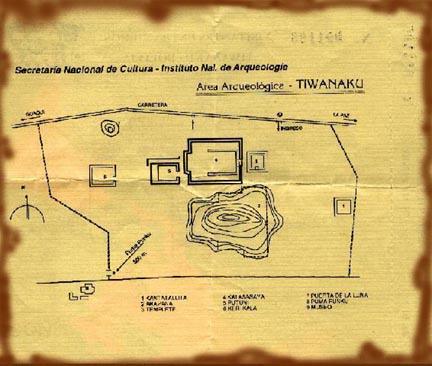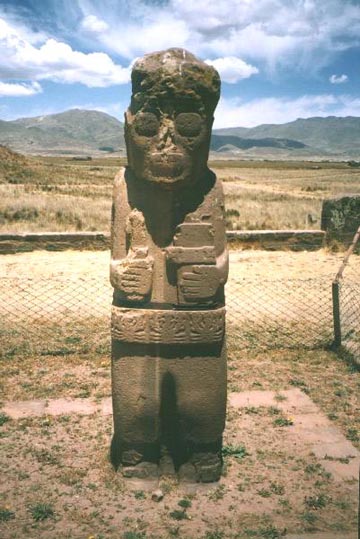
THE ANCIENT ANDEAN CITY:
TIWANAKU

Tiwanaku refers to both the cultural horizon and the ceremonial center and settlement of Tiwanaku. The archaeological site is located in Bolivia, west of La Paz and near Lake Titicaca. This majestic city rises 3, 660 meters above sea level. Tiwanaku is thought to have been the center of religious worship and mercantile trade from circa 200 AD to its collapse between 1000 and 1200 AD.Excavation at this site is ongoing, and to date it is unknown who the inhabitants were, or why the city was abandoned. The most popular theories for collapse refer to a major drought lasting several years that would have been very damaging to Tiwanaku agriculture. The wares from this center were widely traded with outlying states, such as the Wari. It is also suggested that the collapse may have resulted from a break in trading partners causing economic stress.
Aside from the impressive architecture and stelae carved figures, such as the one on the left, one of the most impressive features of Tiwanaku and its hinterland is their unique agricultural adaptations. The people of Tiwanaku constructed huge irrigation canals and raised fields that guaranteed the allotment of water to fields that were designed to resist drought in the harsh Andean environment. The construction even altered the course of major rivers.

|
What Is This Background???